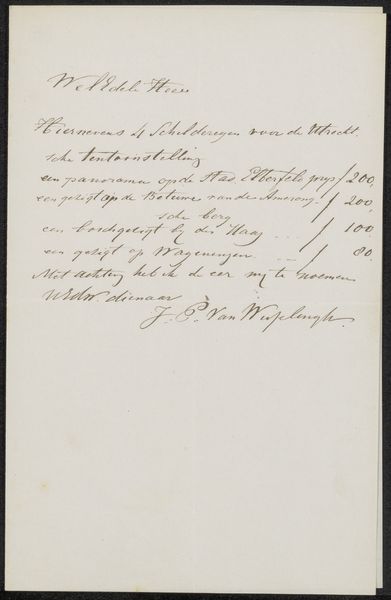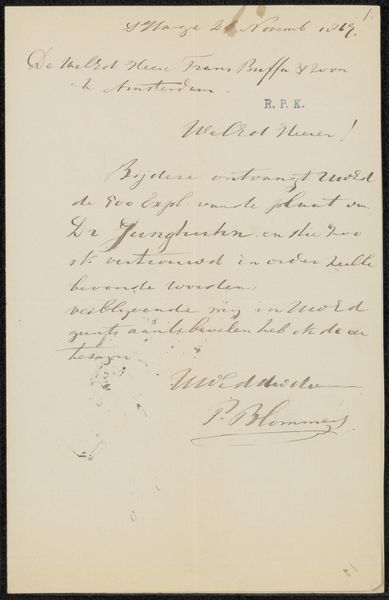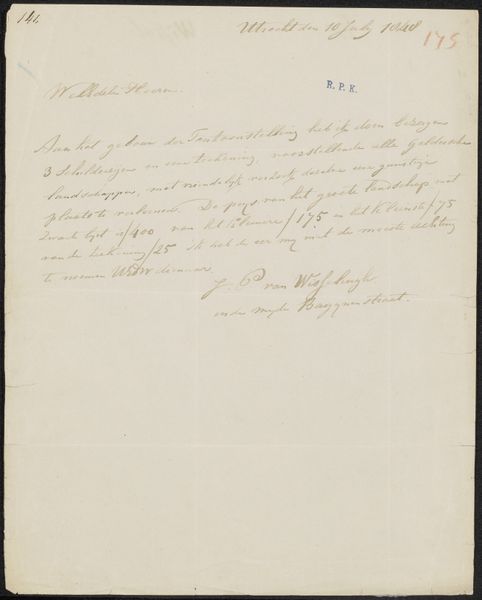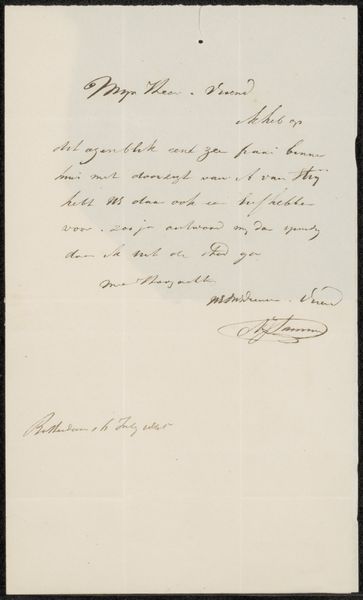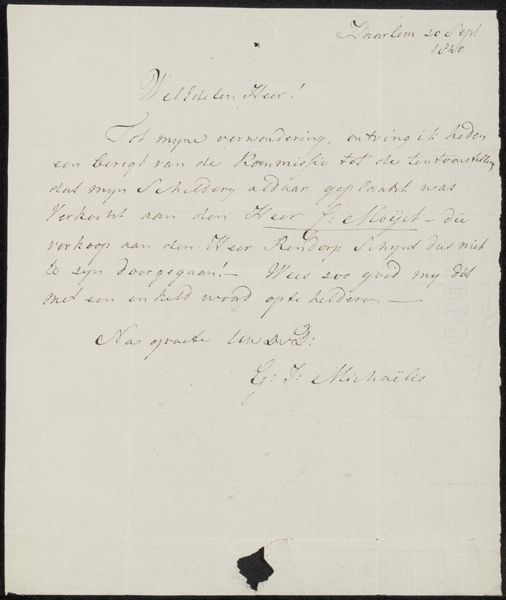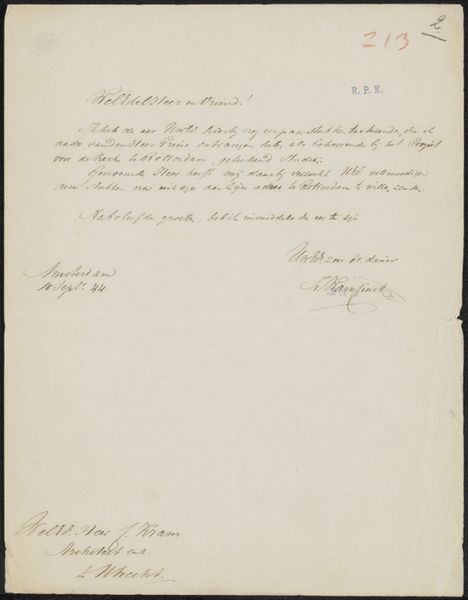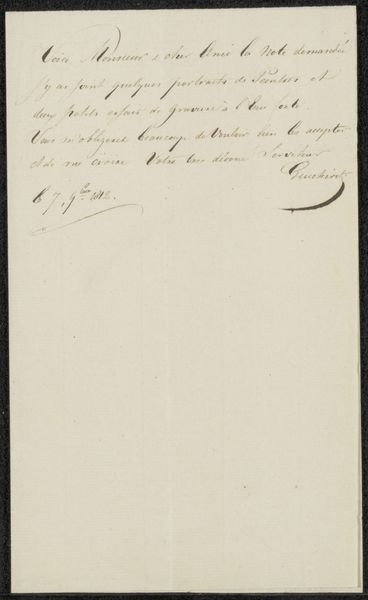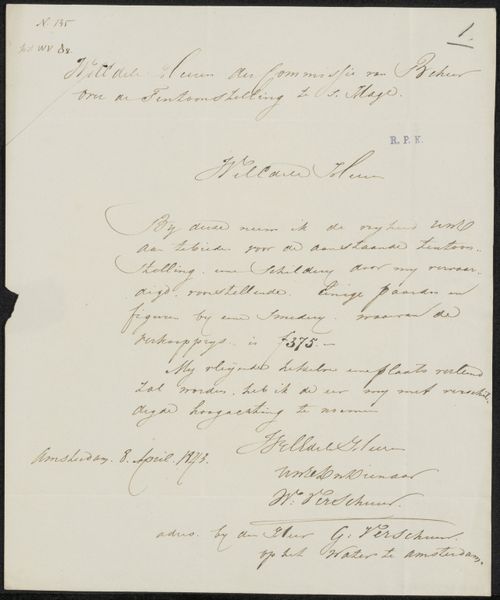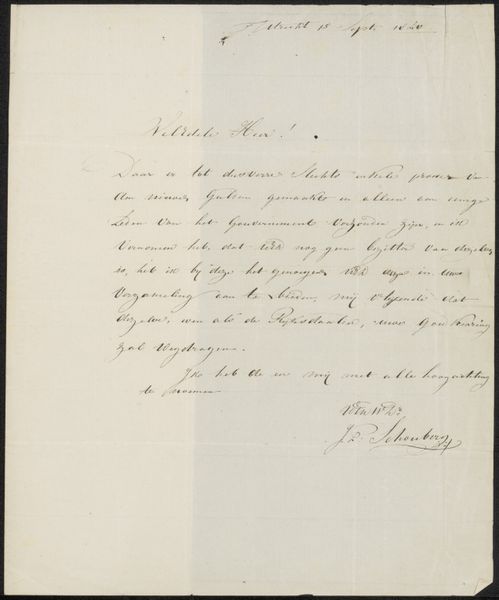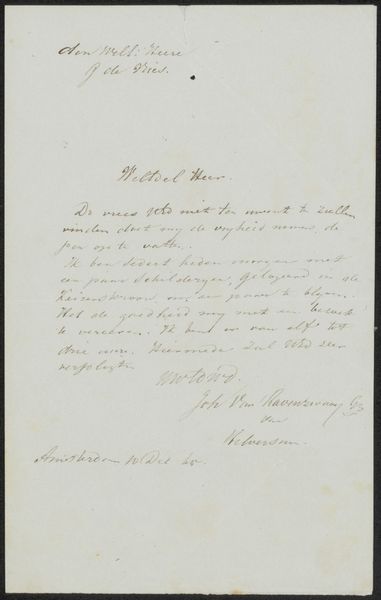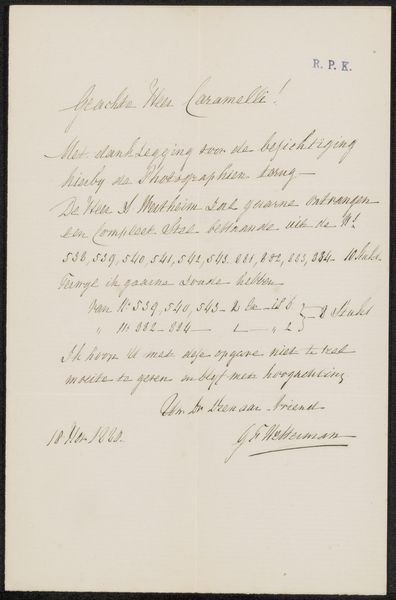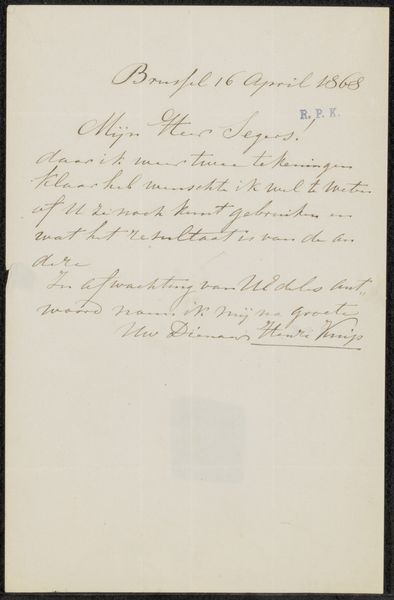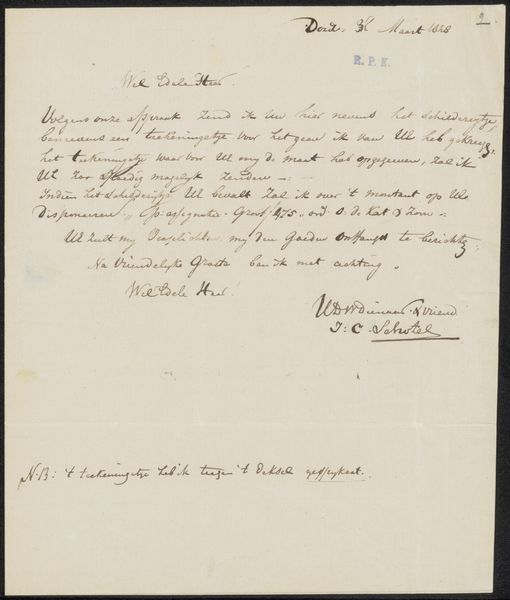
drawing, paper, ink, pen
#
drawing
#
paper
#
ink
#
pen-ink sketch
#
pen
#
calligraphy
Copyright: Rijks Museum: Open Domain
Curator: This letter, "Brief aan Pieter Verloren van Themaat," created around 1860 by Johannes Pieter van Wisselingh using pen and ink on paper, strikes me with its direct, utilitarian nature. It's a business correspondence, seemingly a record of a transaction. What grabs your attention about it? Editor: I am interested in the act of physically writing. I mean, with this use of pen and ink, it appears less focused on expressive qualities and more about its pure functionality as a transactional object. So, what can we say about how materials impact the value and context of this work? Curator: Exactly. Think about the materiality of 19th-century commerce. This isn’t high art intended for aesthetic appreciation; it is meant to transmit information efficiently and serves its utility as its value. How does the mass production and distribution of paper impact artistic practice, the idea of originality, or notions of fine art in general, by bringing into existence materials for everyday business? Editor: Interesting...The value then shifts from artistic skill to the pragmatic act of documenting a transaction. Curator: Precisely. The uniformity of the ink and the standardization of letter writing protocols indicate the forces of industrialization. What would be the impact of creating copies on carbon paper and the role of secretarial staff on creating this piece? Editor: It's amazing to see the history of capitalism inscribed so plainly on a simple piece of paper. Curator: And understanding that informs how we view other art objects and practices during the same era. I now perceive the artistry not in brushstrokes, but the historical account itself and the implications on industrial materials. Editor: Thank you!
Comments
No comments
Be the first to comment and join the conversation on the ultimate creative platform.
